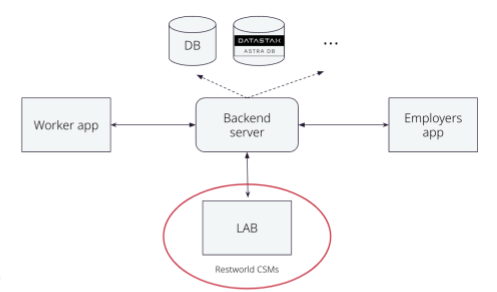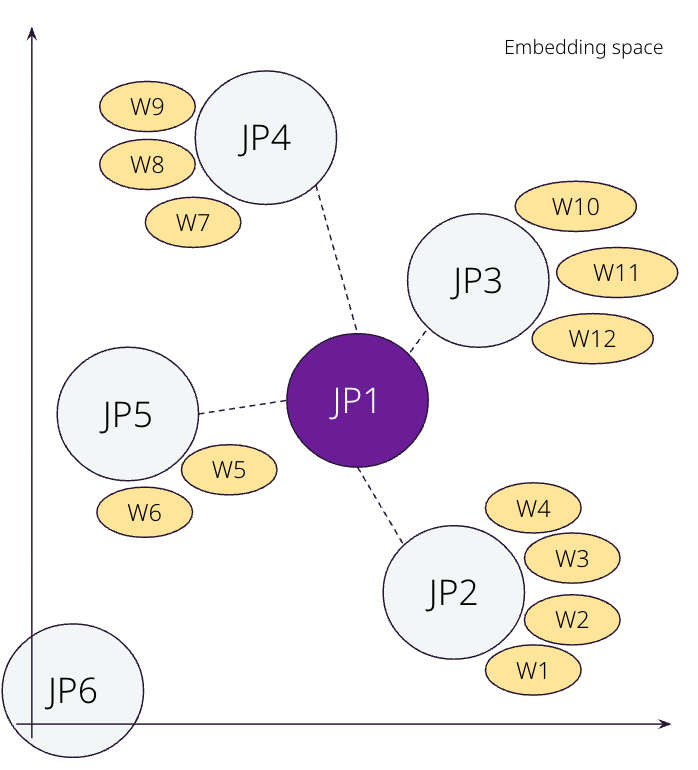Vector Search in Action: How Restworld Improves Relevance and Accuracy in Job Matches

Finding the perfect match between job seekers and job openings has always been a challenge. Traditional recruitment methods often fall short in understanding the nuanced needs of both employers and potential employees, leading to mismatches and inefficiencies. This is where Restworld steps in, pioneering an innovative solution that harnesses the power of vector search to transform recruitment in the hospitality sector. By addressing the core issue of relevance and precision in job matchmaking, Restworld has marked a significant milestone in the industry.
In a recent webinar, Restworld's CTO Edoardo Conte shared valuable insights and strategies on effectively implementing vector search in a real-world application, showcasing how the company enhanced the accuracy of job matchmaking algorithms and fundamentally transformed the recruitment process for hotels, restaurants, and bars.
What is vector search?
Vector search involves representing diverse data types, like text and images, as vector embeddings – arrays of numbers. These vectors encode the semantic context of the input data, making it possible to perform similarity searches. The process employs embedding models to translate data into vectors.

In the example above, the vectors have two dimensions, and the entries represent [clothing type, color]. The red shirt has a vector [1,1] and the blue pants would have a vector [-1,-1]. Now let’s look at the green skirt. A skirt is closer to a pair of pants in function and green is near to blue in the color spectrum, so its embedding vector is near the blue pants and might look like [-0.8,-0.8]. In the context of vector search, the closer the vectors are to each other, the greater their similarity.
Restworld’s use case
Restworld has applied vector search to revolutionize recruitment in the hospitality industry, matching job seekers more accurately with appropriate positions.
Architecture
The platform's architecture centers around a backend server, connecting worker and employer applications. A specialized internal platform called “LAB” is used by customer success managers (CSMs) for moderating job application flows, ensuring an efficient and human-centric approach.

Data-driven recruitment
Restworld’s journey with vector search has been about leveraging its own data to make informed matches between employers and potential employees. By embedding job positions and examining historical data, the platform ensures that candidates are matched with roles that align with their past successful applications.
Vector search in recruitment
Vector search in recruitment represents a paradigm shift, enabling a more nuanced approach to matching candidates with job openings. By encoding job descriptions and candidate profiles into vectors, Restworld's platform can find matches based on the similarity of these vectors, going beyond traditional keyword matching.
Vectorizing job openings
The process of vectorizing open roles begins with the creation of textual descriptions for each role. These descriptions, rich in details about the job's responsibilities, required skills, and qualifications, serve as the foundation for the vectorization process.
To ensure compatibility with the predominantly English-based text embedding models, Restworld employs DeepL, a translation tool renowned for its accuracy and fluency in language conversion. It deftly translates Italian job descriptions into English, maintaining the nuances and specificities of the original text. This step is crucial as it aligns with the sentiment that "The hottest new programming language is English," recognizing the dominance of English in the generative AI space.
The embedding model then comes into play, converting these detailed English descriptions into multi-dimensional vector representations. This conversion encapsulates the semantic richness of each job role into a numerical format, enabling the vector search algorithm to understand and process the job descriptions in a quantifiable manner. This innovative approach enables Restworld to harness the power of vector search effectively, ensuring that each job position is represented accurately and comprehensively in the vector space for precise matchmaking.

The mechanics of the matching algorithm
The platform's matching algorithm is designed to be selective and precise. It focuses on job position embeddings and employs historical data to recommend candidates who have been successful in similar roles. This approach, akin to collaborative filtering, ensures more accurate and relevant job matches.
The algorithm analyzes the vector space to identify similarities among job positions. The proximity of vectors in this space indicates the similarity in job requirements and characteristics.

In this example, JP1 shares similarities with JP2, JP3, JP4, and JP5, while JP6, being the farthest in the vector space, exhibits the least similarity with JP1.
Employing a collaborative filtering method, the algorithm recommends candidates for a new job position based on their past success or fit in similar roles.The algorithm compiles a list of candidates for a specific job position, prioritizing those with a history of interest or success in similar roles, as determined by the vector space similarity.
Optimizing with Astra DB's vector store
DataStax Astra DB's vector store has changed the game for Restworld, offering serverless flexibility, scalability, and operational ease. Its capacity for real-time processing and large-scale data management perfectly complements Restworld's evolving needs.
Here are the detailed benefits:
Scalability
- Serverless architecture Astra DB’s serverless infrastructure enables Restworld to scale its vector database resources dynamically. This means that as the number of users and the data volume grow, Astra DB can automatically adjust to handle increased load without manual intervention.
- Cost-effectiveness The serverless model also ensures that Restworld only pays for the resources it uses. This aspect is particularly advantageous for startups that need to manage operational costs effectively.
Performance and real-time processing
- High-speed data processing Astra DB's powerful backend ensures quick data retrieval and processing. For Restworld, this translates to faster matching of job seekers with job positions, enhancing the user experience.
Flexibility and simplicity
- Ease of management With Astra DB handling the operational aspects of the database, Restworld’s team can focus on developing and refining their application rather than on database management.
Data management
- Robust data handling Astra DB’s capabilities in handling large datasets efficiently mean that Restworld can manage vast amounts of recruitment data (job descriptions, candidate profiles, etc.) without any performance compromises.
- Security and reliability Data security and reliability are critical for platforms dealing with personal and professional information. Astra DB provides a secure and reliable database solution, which is crucial for maintaining user trust.
Challenges and solutions
Challenge 1: Combining vector and non-vector field filtering
Integrating the similarity algorithm with varied data types.
Solution: Restworld used Astra DB's storage-attached indexes to optimize performance for different data categories, enhancing the efficiency of the matching process.
Challenge 2: Language and localization
Translating job descriptions and candidate profiles from Italian to English for better compatibility with OpenAI's text embeddings presented a unique challenge.
Solution: Restworld automated the translation process with DeepL, ensuring that the embeddings accurately represented the semantic context of the data in the English language for best compatibility with the AI model.
Challenge 3: Maintaining scalability and flexibility
As a startup, Restworld needed a database solution that could scale with its growth without demanding extensive management.
Solution: The choice of Astra DB provided a serverless solution that could scale effortlessly with Restworld's growth, removing the burden of database management and allowing the team to focus on innovation.
Challenge 4: Ensuring real-time data processing
For a recruitment platform, real-time data processing is crucial to match job seekers with job openings efficiently.
Solution: Leveraging Astra DB's capabilities, Restworld ensured real-time processing of data, significantly improving the speed and relevance of the matchmaking process.
Future directions
Restworld plans to introduce chatbot technology to aid job seekers in completing their profiles and assist CSMs in operational tasks. These context-aware chatbots will use historical data and job position semantics to guide job seekers through the profile completion process, ensuring that the data collected is comprehensive and accurate. This is crucial as better-quality data directly translates to improved vector search outcomes, enhancing the platform's ability to make precise job matches.
The deployment of chatbots represents a significant stride forward for Restworld, promising a more efficient, user-friendly, and data-rich recruitment environment. This advancement underscores Restworld's commitment to continual innovation and its role as a frontrunner in harnessing AI technologies for practical, impactful applications in the recruitment domain.
Conclusion
Restworld's innovative use of vector search, combined with all of Astra DB’s other capabilities, sets a new standard in data-driven recruitment, highlighting the immense potential of AI and vector search in practical applications.




